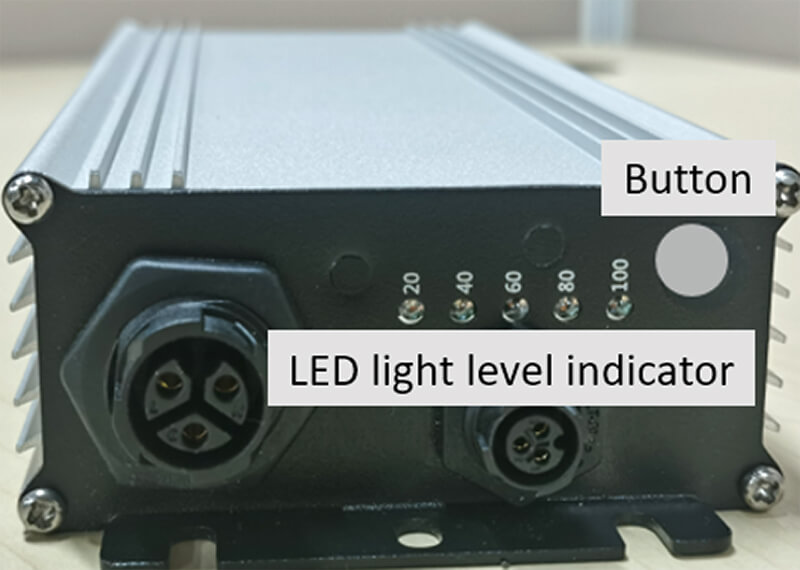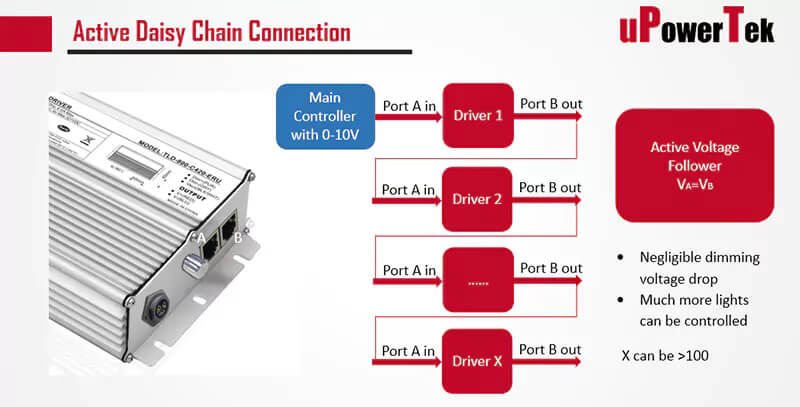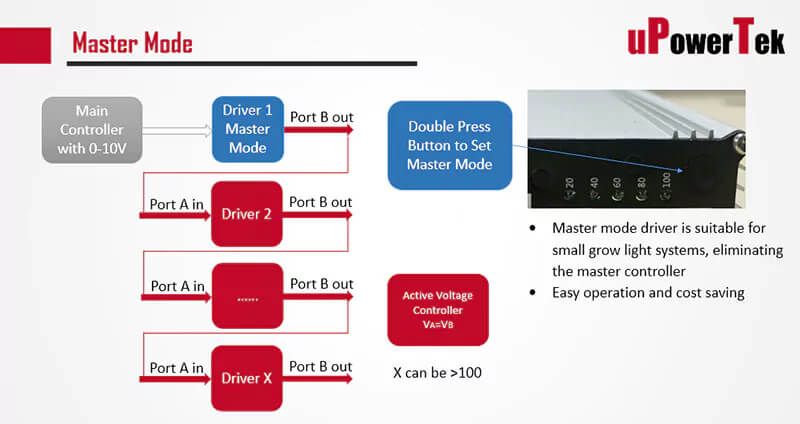uPowerTek TLD series for plant lighting with "Active Daisy Chain" now also with dim button
Upowertek now offers the 300-800W TLD series LED drivers with a push button to adjust the dimming level. The traditional way to adjust the power of the luminaire is to use the rotary knob and turn it to the desired level. However, the rotary knob has the following disadvantages:
- The rotary knob is not as reliable as a push button.
- A rotary knob with IP67 protection is extremely expensive, while a simple IP67 design can be achieved with a waterproof push button.

The operator can adjust the power in 20% increments. In this case, the indicator lights only for 1 minute so as not to affect the growth of the illuminated plants.
Active Daisy Chain
The traditional daisy chain connection is realized by 2 connectors that are directly connected internally through the PCB. This has 2 major disadvantages:
- All dimming circuits in the system are connected in parallel, and the control unit can only drive about 50 drivers.
- There is a voltage drop on the dimming cable, especially on the furthest one, so the consistency of the system is not guaranteed.
- With a large number of dimmers connected in parallel, it is very easy to introduce noise into the system, making it unstable.

In Upowertek's active daisy-chain design, RJ12 port A is never connected directly to port B, but through a specially designed circuit that outputs an active digital signal that mirrors the voltage of port A. In this active system, the main controller must be connected to the RJ12 port A, and the RJ12 port B must be connected to the RJ12 port B. So in this active system, the main controller only needs to drive one luminaire, and each luminaire receives the dimming signal from the previous luminaire and passes the same value to the next. Thus, the system can easily control more than 100 drivers with one controller.
Master Mode
In addition, the TLD series has a Master Mode. Any driver in the chain is set to Master Mode and sets the dimming level for all connected drivers. This means that no external control is required.



























